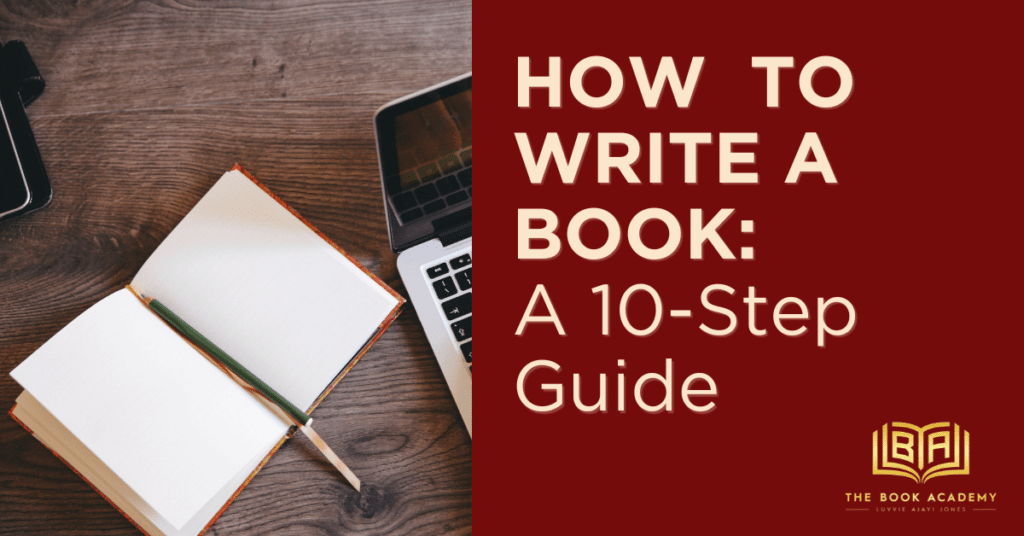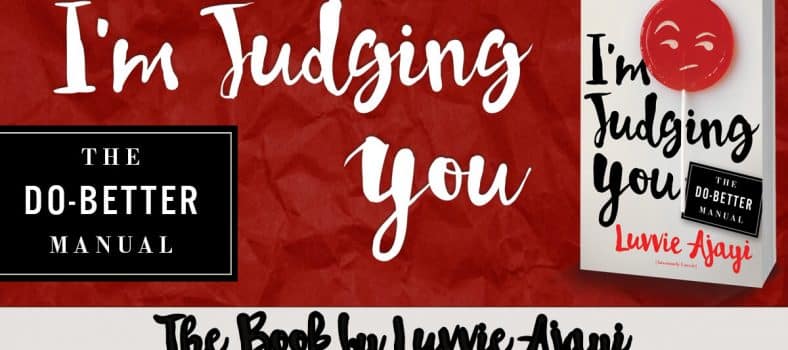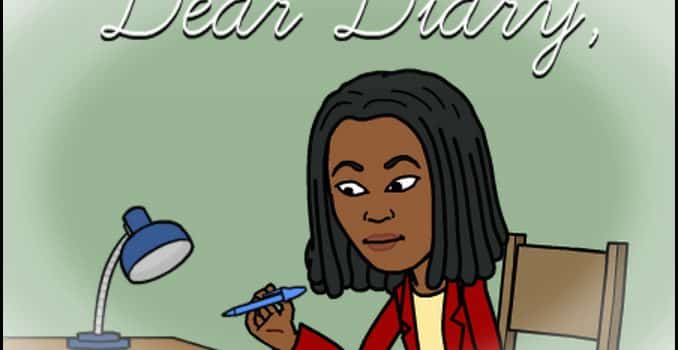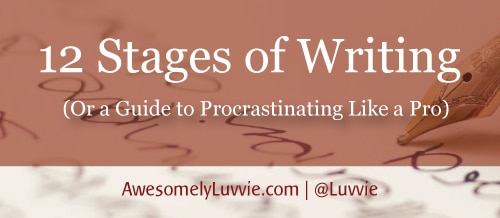How to Write a Book: A 10-Step Guide
Writing a book is both an art and a science. It’s a journey that demands creativity, discipline, and strategic planning. I’ve written 4 New York Times bestselling books in 8 years, and I’ve used the same formula to make each happen. And now, I want to help more people get their stories out in ink, through books. I know the power of books, because becoming an author has changed my life! That’s why I’ve created The Book Academy, and why I’m teaching others how to get published!
Here’s a comprehensive 10-step guide to help you navigate from a budding idea to a published masterpiece.
How to Write a Book

1. Get Clear on Your Idea and Thesis
Every great book starts with a compelling idea, because that is the heartbeat. First of all, ask yourself WHY you want to write a book? What would you like to accomplish with it? Then figure out what message you want to convey, what stories you want to tell, and what impact you hope to have on your readers. This idea should resonate with you personally because it’s what will keep you motivated through the writing process. Getting clear on your core idea is the foundation of your book.
That focus should lead to a thesis statement, a concise summary of your book’s main argument or point. It should be specific and compelling, guiding the narrative of your book. Every book has ONE big idea that is being passed on in those pages, and once you know what that is, you’re able to be clear on what belongs in the book, what should be left out, and what the constant throughline is that makes it all cohesive. It guides your writing and keeps you aligned with your goals.
2. Create Your Book Outline
An outline is your writing blueprint, and true roadmap. It organizes your thoughts and gives structure to your narrative. How do you want the book to flow? What chapters do you wanna have? Will you have sections? Is this gonna be a chronological book or one that moves in between time? An outline can start with something as simple as a bullet point list and then you blow it out from there. It doesn’t have to be detailed; a simple chapter-by-chapter breakdown is helpful. This step helps organize your thoughts and gives you a clear direction, making the writing process smoother and more structured.
3. Write a Book Proposal
A book proposal is an essential step in any book’s creation, whether you are going the traditional publishing route or self-publishing. And many skip it, when they self-publish, but I think that’s a mistake. Your proposal is your book’s business plan, and even if you won’t be getting an agent, the work you do with a proposal is still necessary for you to have a fully fleshed out plan for your book. And without one, I think writers, and ultimately books, suffer.
The book proposal forces you to do a lot of pre-work that comes in handy when it’s time to write, market and design your book. It includes an overview of your book, chapter summaries, information about your target audience, a marketing plan, your author bio and comparative titles (other books that are similar to yours or written by people in your industry). With a book proposal done, the work of writing the book and promoting it is much easier than it would be. Don’t skip it!

4. Decide On Your Book Publication Path
People think their only option for writing a book and becoming an author is if they get a book deal from a big publishing house. It’s a major myth that has kept countless books unwritten. Traditional publishing isn’t the only option, because you can self-publish by DIYing it or go through a hybrid publishing house. Whatever route you choose to publish your book has its pros and cons. Traditional publishing can offer more support and resources, but it’s more competitive and offers less creative control. Self-publishing requires more personal investment but offers greater control and higher royalties. Whatever path you choose ultimately still leads to a need to:
5. Find Your Book Publisher
Writing and publishing are NOT to be done alone, no matter what path you choose. And it is up to you to choose the people you partner with.
Traditional publishing:
- Get a literary agent – A literary agent is an incredibly important part of a publishing deal, as they manage all aspects of it and serve as a liaison between you and a publishing house. And for their work, they are entitled to 15% of all royalties and profits on your book in perpetuity (forever). So who you get to be your agent should be a champion for you. To get one, most people have to send query letters to agents who represent topics similar to the book they want to write. And an agent you’re querying will DEFINITELY wanna see your book proposal. Be prepared for rejections until you find the right fit.
- Choose the editor/publisher – When you have an agent, and your book proposal is solid, that agent will send the proposal to many editors at publishing houses. The BEST case scenario is that multiple editors want your book and bid on it. In that case, you’ll need to pick THE ONE you wanna go with. For my first book I’M JUDGING YOU: The Do-Better Manual, 11 editors passed on it and only ONE said yes. So I had less choice. For my second book PROFESSIONAL TROUBLEMAKER: The Fear-Fighter Manual, TWELVE editors bid on it, and I got to pick the editor who I felt was the best fit for me.
Self/Hybrid publishing:
- Pick the distribution channels or printer for your book – Who will print your book? Will it even come in print or just in eBook format (platforms like Amazon Kindle Direct Publishing, IngramSpark, Draft2Digital? How do you want to get this out?
- Choose the hybrid publishing house (like WiseInk Publishing) – If you wanna work with a hybrid publishing house, they basically help you manage the entire book process (including editing, cover design, marketing), like a traditional publishing house, except the upfront money investment is yours. It also means you keep all the profits and there is no middleman.
- Find a freelance editor who will edit your manuscript – If you truly wanna DIY and handle EVERYTHING yourself, make sure you get an editor, if nothing else.

6. Write Your First Draft of the Book
It’s time to get to work to write your first draft! The first draft is about getting your story or ideas down. It’s about getting the words out. This isn’t about creativity but discipline. And it’s not about perfection but progress.
This is the step where countless books go to die, because people don’t create a writing practice that will enable them to move forward. And then when they go to write, they’re constantly editing themselves, so they keep going over the same page. Let the first draft be bad. Give permission to your first draft to be poor. Allow your first draft to be raggedy. It’s okay, because its job is to EXIST. ONCE you finish your draft, then you can go back to edit it and make it good. But trying to make the first draft really good is like trying to renovate a house that isn’t built. Build it first. You cannot edit a blank page, so let the words flow.
7. Get the Book Edited and Finalize Manuscript
Once your manuscript is done, NOW you can get it edited. Start with self-editing, where you go back, re-read and edit your own words. Move things around, elaborate, delete. Do what you must to make it feel and sound good to you. THEN, you get someone else to run it over. The one thing I consider a non-negotiable, no matter what path you choose, is having a professional editor to refine and make the words sing! Editors provide critical feedback on structure, tone, and clarity. And usually, an editor will work with you on 2 rounds of edits.
Great writers aren’t just born: they’re often EDITED to greatness. Your editor should give you big sweeping edits (“remove this chapter” “elaborate here” “add a story here”) and they will also do grammar edits. Then there are copyeditors, who comb through the whole manuscript with a fine tooth comb, making sure typos and other formatting things are nowhere to be found. This is CRUCIAL. Do not skip it.
All this editing allows you to finalize your manuscript, which is THE BIG WIN!!! You are now an author!
8. Create Your Book Cover
“Don’t judge a book by its cover” is advice NO ONE TAKES because we are absolutely judging every book by that cover. It is everyone’s first impression of your book, so make it count. Invest in a professional designer who understands your genre and target market. And who won’t have your book looking like someone threw it together in Microsoft ClipArt.
A good book cover balances appeal with messaging. It needs to stand out on a book shelf while also reflecting the essence of your book and the message you wanna share. Between the colors, fonts and imagery used, your cover is the literal wrapping paper to your impactful ideas. A good amount of the success of your book will depend on whether people are compelled to pick up and buy the book, or repelled by it. Make it count.
9. Market Your Book
You should have a robust marketing plan that includes pre-launch, launch, and post-launch strategies. You can break these down based on your sphere of influence. You will market to your personal contacts, your professional network, and then your digital communities (family/friends, colleagues/mentors, social media followers/email subscribers). How you promote your work to each might be slightly different, but being clear what you want them to do is important. Create EASY TO FOLLOW calls to action, create a landing page with links to buy your book, and remind people over and over again that you have a book, and that it is exactly what they need in their lives.
Another important piece of marketing for books are BLURBS. Those are reviews from (early) readers, serving as a vouch for the work or for you, the author. You can get 3-5 of those printed on or inside the book. Additionally, you should do some in-person promotions in the form of readings, book tours or events to celebrate the book.
One thing to remember about marketing your book: if you aren’t sick of talking about it, you aren’t promoting it enough. Market your book without guilt because it deserves to be shouted from the rooftops!

10. Publish the Book and Celebrate
Writing, marketing and publishing a book is a BIG DEAL. It is an enormous feat, and anyone who does it should be incredibly proud. Because you ultimately climbed a mountain! You’re a champ! So on the day that your book is released, and in the weeks and months following, revel in this massive achievement. Know that you’ve done something that 99% of people in the world will NEVER do: complete a book.
Writing and publishing a book, like getting a degree, requires passion, dedication, and discipline to finish. GRIT, even. Because at any step in the process, it might feel hard. But PUSH THROUGH. The world needs to see and hear and read your words, your stories, your lessons.
Embrace your process and enjoy the journey from idea to ink to impact!







